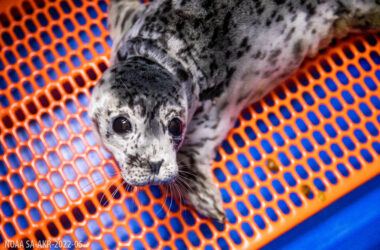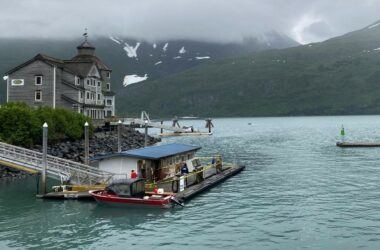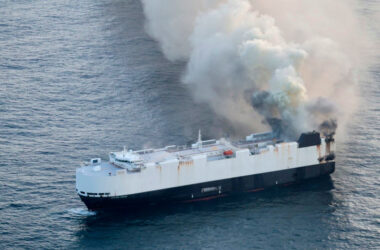The North Pacific Fishery Management Council is evaluating additional management actions to minimize the bycatch of western Alaska origin chum salmon bycatch to the extent practicable in the Bering Sea pollock fishery. It’s hoped that this can be occur while still obtaining the maximum yield possible in the Bering Sea ground fish fisheries, and balancing all other national standards.
While the pollock fishery intercepts chum salmon originating from the North Pacific and predominantly hatchery origin Russia and Asia chum, the Council is focused on the bycatch of western Alaska origin chum salmon.
The returns of these fish have declined substantially in recent years, which has negatively impacted the source for western Alaska residents.
Recent studies indicates that the declines in chum salmon populations across many regions of the North Pacific, including Canada, Japan, Russia, Korea, and the U.S., have been driven by warmer water temperatures in both the marine and freshwater environments.
This negatively impacts the growth and reproductive rates, harming their overall chances of survival.
However, western Alaska chum salmon are taken as bycatch in the Bering Sea pollock trawl fishery, reducing the amount of salmon that return to Western and Interior Alaska rivers and subsistence fisheries.
At its October meeting, the Council approved analyzing changes to chum bycatch management measures after reviewing a previous study.
The next step will be an impact analysis as required by Federal law, to analyze potential environmental, social and cultural, and economic impacts. The Council’s decisions were based on recommendations from the Scientific and Statistical Committee, the Advisory Panel, as well as public input that was provided through numerous written comments and testimony from over 50 people.
The Council analysis will evaluate the following management measures to change the status quo:
• A bycatch cap on the total number of chum salmon taken in the pollock fishery. The potential caps range from 200,000 to 550,000 total chum, or about 35,400 to 97,350 coastal western Alaska chum salmon.
• Using annual run strength indicators from the Yukon River, Kuskokwim River, and Norton Sound region to trigger various caps.
• An annual cap on Western Alaska origin chum salmon bycatch (ranging from 40,000 to 53,000 Western Alaska chum salmon).
• Additional regulatory requirements and management measures for the pollock fleet to avoid bycatch by closing areas in near real-time throughout the season in response to when chum are on the fishing grounds.
The first review of the impact analysis will be in mid-2024, and the Council is scheduled to take final action on this issue by December 2024.






